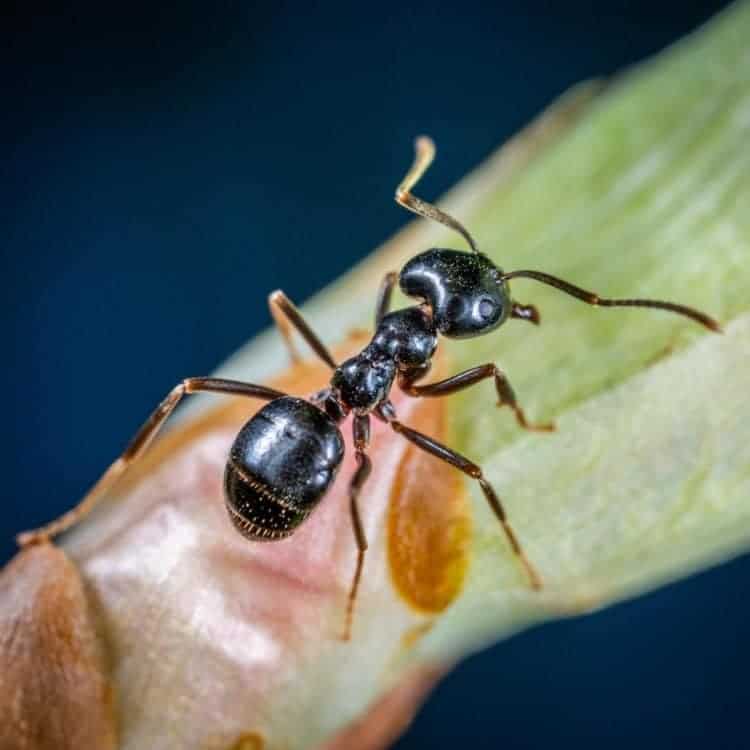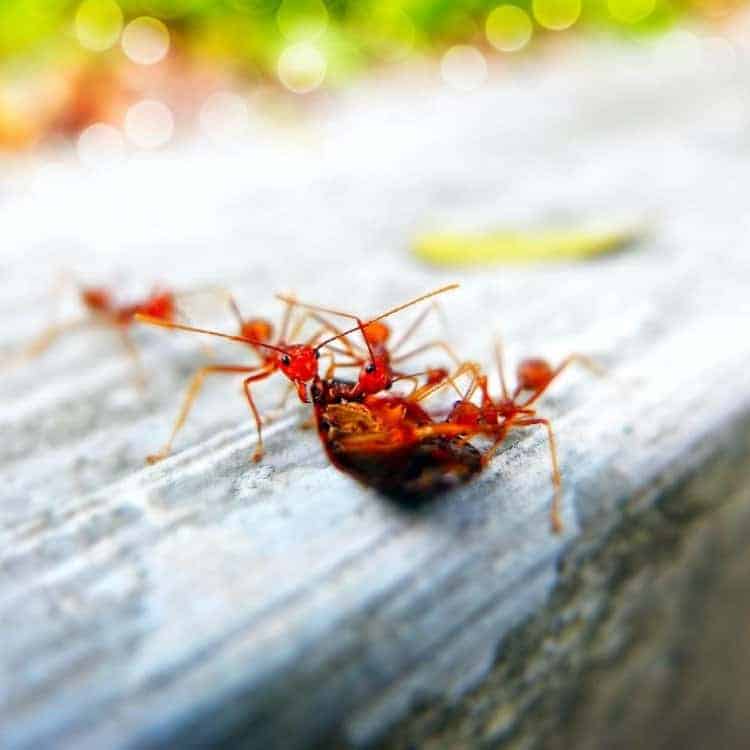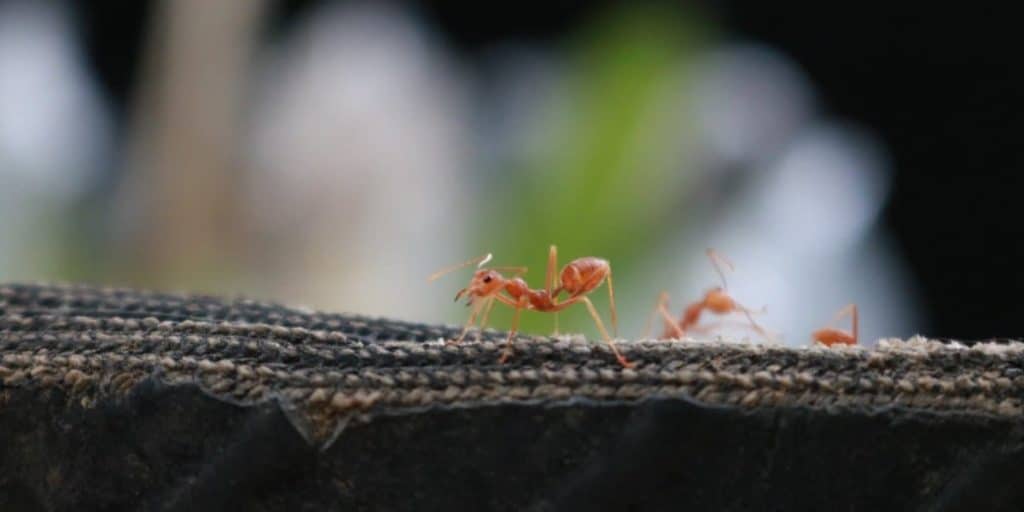Having an ant colony as pets is a wonderfully fun and educational experience! And, starting your own colony from scratch can be a fulfilling hobby that will bring you years of happiness. In addition, owning your own ant colony with the correct setup can be quite easy.
Ants naturally clean up after themselves and each colony develops a sustainable system; therefore, they can be low maintenance for pet owners. Once you finally have your ant colony set up and ready to roll independently, you are sure to be able to sit back and watch your ant world develop.
At this point, you may be wondering “How do I start my ant colony” or even “What types of species should a beginner choose?” This ant keeping for beginners guide will answer all of the necessary questions to help you be successful in raising your very own ant colony. Follow these simple steps to achieve a happy ant colony that you can enjoy for years to come!

Choose Your Species
Being an ant keeper is a big responsibility; after all, you will be in charge of a whole colony soon! So, picking the perfect species for your situation is a crucial first step to becoming a successful ant colony owner. There are many ant species that are perfect for those of us who are beginners, and there are species that may require a little more experience.
Here is an outline of a few species that are perfect for beginners as well as a couple of species that may be highly sought after but take more experience and care when handling.
Messor or “harvesters” ants are well-known to be great for those of us new to keeping ants as pets. They are very self-sufficient as they only require water, fruits, various seeds, and dead insects to survive. They do not require syrup or sugar water as other ants may need.
Lasius or “black garden ants” are also an easy breed for beginners. Black garden ant colonies grow quickly and, to help them grow even quicker, you can provide them with syrup or sugar water. They thrive when they are fed dead insects as well as fruits. They do not typically nest in wooden areas.
Serviformica or “wood ants” are another option for inexperienced ant owners. As their name suggests, they enjoy burrowing around wooded areas. These ants are commonly sought out as pets because they often come in bright orangey colours, and they are a calm species that do not typically attack. To keep this colony happy you can provide them with dead insects, fruits, and honey.
Solenopsis or the “fire ant” is commonly sought after as pets due to their aggressive nature and bright colours. You may be wondering why someone would want these ants specifically for their aggressive behaviour. But, if you think about it, it is a common practice for people to seek out dangerous pets. It is the same for snakes, lizards, poisonous toads, and even some dangerous mammals. Something about a pet being considered ‘dangerous’ makes them seem more exotic and highly sought after.

Fire ants are very small, but they have a violet temperament and it does not take them long to swarm when their environment is upset. It is said that fire ants have been known to attack people and other pets within the home and, if there are enough of them, they can become deadly. They require foods such as meats, dead insects, syrup, and sweet fruits. These ants are not recommended for beginners due to their bad temperament, ability to harm, and vast diets.
Myrmeciinae or the “bulldog ant” is native to Australia and is a popular pet for dare-deliver owners. These ants are highly venomous and inflict a painful bite that can kill a human. Thankfully, these ants are not commonly found in highly populated areas and are mostly found in bushland. Like the fire ants, bulldog ants are fairly aggressive and they have a high-maintenance diet that includes juicy fruits, seeds, fungi, and various meats. They have been known to jump and are not a species that you would want in your home if the colony is able to escape their container. Due to all of these factors, Myrmeciinae are not recommended for beginner ant keepers.
Queen Ants
As you already know, queen ants are important when starting an ant colony. If you are an ant keeper that would like to start your own colony from scratch, you may purchase queen ants separately or you may purchase a queen ant along with a few starter or “worker” ants.
You may also capture a wild queen ant in your area, but this can be difficult as queen ants typically remain underground and away from danger. It is also difficult to capture an entire colony as they are already used to their current environment and may not adapt well to captivity.
If you purchase a lone queen ant, you may keep her in a test tube along with a cotton ball. Store her in a dark environment, and she will lay eggs to begin a colony. Once she has laid her eggs, you may transfer the queen ant to her environment (along with the eggs).
This is the easiest, most fulfilling, and safest way to start your own ant colony. From the time you transfer your queen and eggs to the cage, it will take around 4 months to 1 year, depending on the species, for a full colony to develop.
Create the Right Environment
Creating the right environment for the ant species you choose is crucial to keeping the colony alive for years to come. An environment conducive to allowing your pets to live a long and healthy life will depend on if they receive the right amount of water, the proper foods, the right materials for their formicary, and if their environment is kept at the correct temperature.
Before purchasing items for your ant colony it is important for you to know basic information about your ant species’ natural environment so you can recreate that environment.
Depending on the species you choose, you may want to consider purchasing a formicarium specifically made for that particular type of ant. A formicarium is the container in which your ants will live, and it is created to assist ants in creating nesting chambers, tunnels, and other areas that naturally occur in ant environments.
Many ants are comfortable at room temperature and others require higher temperatures than the temperature you may keep in your home. For these species requiring higher temperatures, you may purchase a heating cable.
For beginners, I would suggest purchasing an ant formicarium that includes an expansion module as well as a moisturizing system. These items will help you greatly when it comes to providing an environment that can be expanded for a growing colony, and it will keep you from having to transfer your colony to a whole different formicarium down the line. In addition, a moisturizing system is beneficial in providing your ant switch the correct amount of water needed for survival without overdoing it.
While it is important to provide your ant colony with all of the nutrients and hydration they need, it is also significant to remember that these creatures are forages. That is, they typically have to work quite hard in their natural environment to collect the food source the colony needs. Yes, provide your colony with the correct foods they need.
However, do not provide them so much that there is an abundance of resources. For the colony to function correctly the ants need to continue the natural process of working and foraging. To ensure you are not overfeeding your ants, I would suggest that you start out with a small amount of food and slowly introduce more as they utilize what they already have.
In addition to creating the correct environment and providing the right amounts of food, it is important to know exactly what types of foods your ants require. Some ants need wood and syrup to function while other ants do not need syrup at all. It is important for you to provide the right types of foods, and it is also crucial that you do not push food onto your colony that they will not eat.
Foods that they will not eat will go untouched, and it may result in a moldy and hazardous environment for your ants.
Joining the Ant Keeper Community
The ant keeping community is very supportive, and forums across the Internet can be found for support, advice, and connection! Creating your very own ant colony is an enjoyable accomplishment that also requires quite a bit of responsibility.
Some ant species are more low-maintenance when held in captivity, and others require more hands-on assistance.
Queen ants and colonies can be captured and brought into captivity, but there is a high possibility the colony will not adapt well. It is recommended that you purchase a queen ant online to start your colony.
It is important to choose your ant species wisely and to also know what food and environment you should provide to keep your colony happy and healthy. Find the perfect spot in your home for your formicarium where you will be able to watch your very own ant colony grow and prosper!




